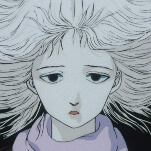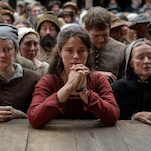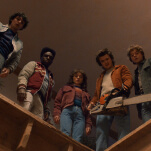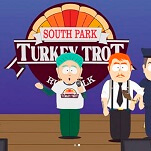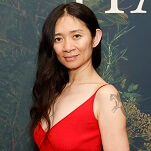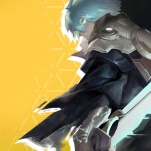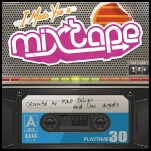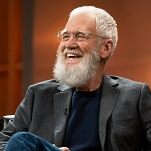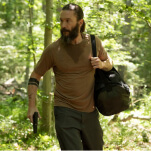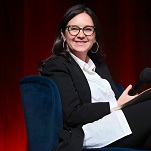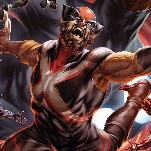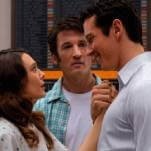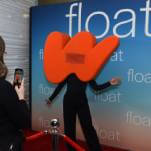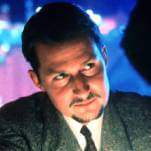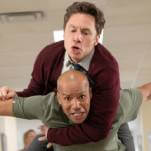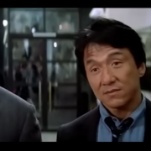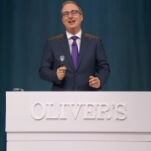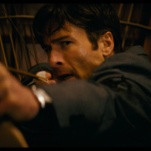The most talked-about political mystery of 1996 involving Bill Clinton wasn’t Whitewater
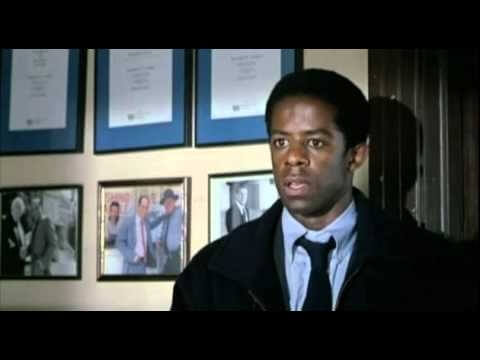
Twenty years ago today, the film Primary Colors was released in theaters, disappointing audiences who expected something more than John Travolta and Emma Thompson doing their best Halloween-costume versions of Bill and Hillary Clinton. But it’s hard to imagine anyone queueing up for the movie could have been anywhere near as excited by the story as they were two years prior. For the better part of a year in 1996, the juiciest political story in Washington—one that caught fire and roared through front pages of national papers, endless reams of gossip-column ink, and talk shows from The Tonight Show to Face The Nation—wasn’t any of the scandals of the Clinton administration. It wasn’t the unending media circus that would eventually envelop Clinton’s second term, when the Monica Lewinsky affair was revealed. It wasn’t Whitewater, or welfare reform, or Vince Foster, or any of the other dozens of tempests that were always roiling around the beleaguered but wildly popular Democratic president. It was a novel that purported to be a thinly disguised portrayal of the 1992 Clinton campaign—and its author was Anonymous.
Before the book was even released, the hype was gaining momentum. Primary Colors was rumored to be an uncannily accurate roman à clef of the behind-the-scenes goings-on during the difficult campaign of then-Governor Clinton and his loyal staff. Narrated in the first person by a sharp aide who bore quite the resemblance to real-world staffer George Stephanopoulos, it depicted in impressive detail any number of events and people with clear true-life counterparts, from the Clintons themselves to political consultants like Paul Begala to a deliciously vicious send-up of then-New York Governor Mario Cuomo. The story followed the idealistic young staffer as he helps a Southern governor, Jack Stanton, navigate a brutal primary campaign and weather ongoing scandals based in part around the politician’s appetite for younger women. As he begins to realize the depth of the candidate’s amoral drive to win at all costs, he undergoes perhaps the world’s most awkward case of buyer’s remorse, as he watches his complicity help elect a man who looks more and more willing to sell out his principles for the highest bidders—or a few more votes.
The idea that it was written by someone with high-level access to the campaign proved irresistible, for the simple reason that it was the ultimate navel-gazing parlor game for the very groups that could most ensure it became water-cooler conversation: journalists and politicians. The book was a perfect mix of political-insider exposé and media-baiting “guess who?” wedded to a story of corruption every bit as compelling a page-turner as a John Grisham novel. But unlike Grisham’s work, this one promised to pull back the curtain on the most famous couple in the country and reveal their true behavior for all the world to see, a nigh-impossible tease for just about anyone interested in the Clinton White House, whether seeking confirmation of the ongoing tabloid fodder provided by the president’s accusers Gennifer Flowers and Paula Jones, or cynical pols looking to have suspicions regarding Clinton’s sliding-scale principles confirmed.
It succeeded on such a massive scale, and became a pop-culture phenomenon, because it seemed to hit its target with unerring accuracy. Sure, there were obvious exaggerations to turn it into a soapy narrative—it’s classified as fiction, after all, and nobody really thought Hillary Clinton had a one-night stand with Stephanopoulos (to cite one of many too-twisty examples)—but the character sketches and personalities involved came across as uncomfortably real. Writing a month after its publication, The New York Times noted the book’s central place in the zeitgeist (“the ultimate pop-culture depiction of a politician who has long since been Arsenioed, Oprahed and Donahued to death”) is due in large part to how fully the Clinton team and associated players acknowledged it seemed to get it all right:
Some of the novel’s scenes, based on meetings between then-Governor Clinton and his campaign confidants, are rendered with such dead-eye detail “that you think, ‘Who was in that room?’ because they seem so creepy,” said Mr. Clinton’s former media adviser, Mandy Grunwald.
Such quotes only confirmed the theory that it was someone who knew all the players intimately, and thus drove the media into doing what it always does, only more so: try to get to the bottom of the mystery. Who was Anonymous? Cover stories in Newsweek, Time, and other periodicals fanned the flames of the investigation into mainstream coverage that pushed it out of political circles and into everyday debate. The Washington Post notes Larry King dedicated an entire show to the search, taking call-in tips from locales as far-flung as South Africa. Suspects, from Doonesbury’s Garry Trudeau to political novelist Christopher Buckley to Stephanopoulos himself, were accused, only to be met with rueful denials. (“I think the best line is Sally Quinn’s: I was hoping it would turn out to be me,” said Buckley.)


